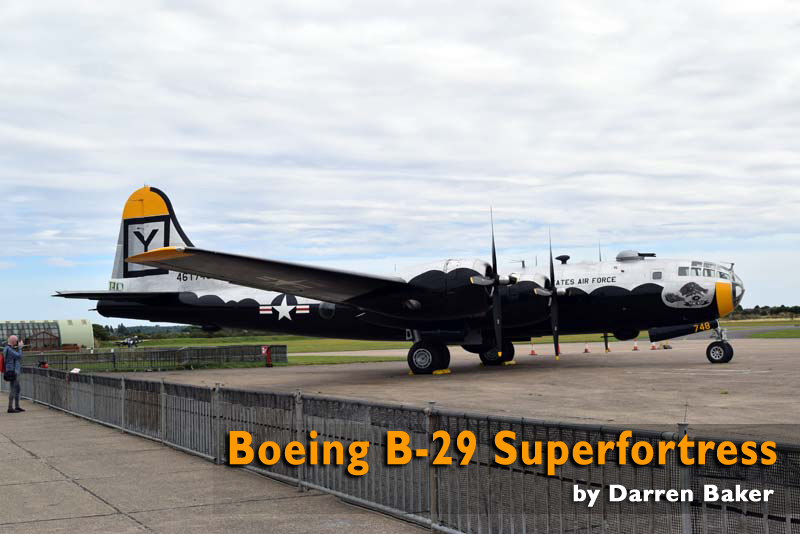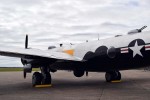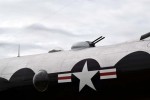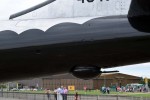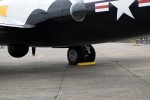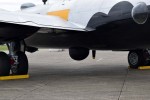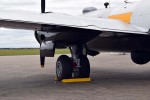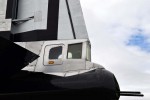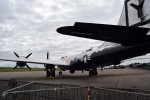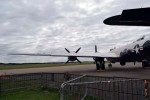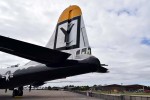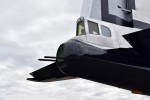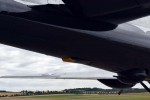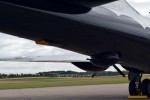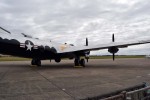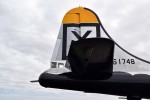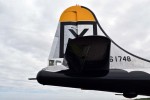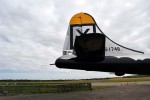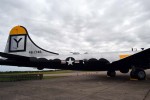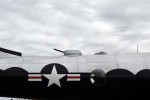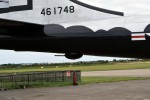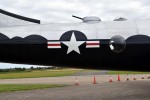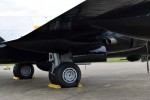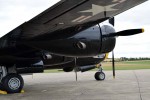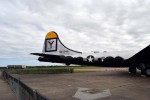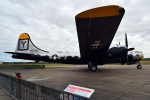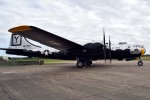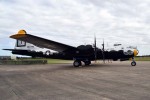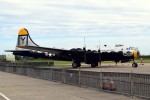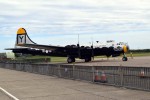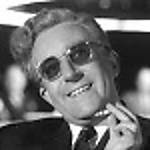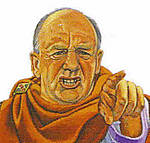1⁄1Boeing B29 Superfortress
8
Comments
The Boeing B-29 Superfortress is a four-engine propeller-driven heavy bomber designed by Boeing and was flown primarily by the United States during World War II and the Korean War. It was one of the largest aircraft operational during World War II and very advanced for its time. It featured a pressurized cabin, all dual wheeled, tricycle landing gears, and a remote, electronic fire-control system that controlled four machine gun turrets. A manned tail gun installation was semi-remote. The name "Superfortress" continued the pattern Boeing started with its well-known predecessor, the B-17 Flying Fortress. Designed for high-altitude strategic bomber role, the B-29 also excelled in low-altitude nighttime incendiary bombing missions. One of the B-29's final roles during World War II was carrying out the atomic bomb attacks on Hiroshima and Nagasaki.
Due to the B-29's highly advanced design for its time, unlike many other World War II-era bombers, the Superfortress remained in service long after the war ended, with a few even being employed as flying television transmitters for the Stratovision company. The B-29 served in various roles throughout the 1950s. The Royal Air Force flew the B-29 as the Washington until phasing out the type in 1954. The Soviet Union produced an unlicensed reverse-engineered copy as the Tupolev Tu-4. The B-29 was the progenitor of a series of Boeing-built bombers, transports, tankers, reconnaissance aircraft and trainers including the B-50 Superfortress (the first aircraft to fly around the world non-stop) which was essentially a re-engined B-29. The type was finally retired in the early 1960s.
Due to the B-29's highly advanced design for its time, unlike many other World War II-era bombers, the Superfortress remained in service long after the war ended, with a few even being employed as flying television transmitters for the Stratovision company. The B-29 served in various roles throughout the 1950s. The Royal Air Force flew the B-29 as the Washington until phasing out the type in 1954. The Soviet Union produced an unlicensed reverse-engineered copy as the Tupolev Tu-4. The B-29 was the progenitor of a series of Boeing-built bombers, transports, tankers, reconnaissance aircraft and trainers including the B-50 Superfortress (the first aircraft to fly around the world non-stop) which was essentially a re-engined B-29. The type was finally retired in the early 1960s.
Comments
Jessie, I tried following the link but it says that I am not authourized to view it. Any ideas?
FEB 06, 2016 - 07:43 AM
Thanks, Jessie.
Works great now! However, I think the Hamsters stole ten while you were looking away.
Gary
FEB 06, 2016 - 10:11 AM
Thanks Jess,
The hamsters are gone, link works and the photos are fantastic.
FEB 06, 2016 - 10:22 AM
Tpyos happen. I have a request out to the forum Mods to have that corrected. It's only the thread title thankfully; the feature wasn't harmed.
FEB 06, 2016 - 10:23 AM
There's been a few times I wanted to edit a thread title, so I hear ya. Would be nice to be able to fix it ourselves.
FEB 06, 2016 - 10:33 AM
I seem to recall seeing a B-29 at Duxford but not in this paint job. Any info on this incarnation?
FEB 07, 2016 - 07:43 AM
Copyright ©2021 by Darren Baker. Images also by copyright holder unless otherwise noted. The views and opinions expressed herein are solely the views and opinions of the authors and/or contributors to this Web site and do not necessarily represent the views and/or opinions of AeroScale, KitMaker Network, or Silver Star Enterrpises. Images also by copyright holder unless otherwise noted. Opinions expressed are those of the author(s) and not necessarily those of AeroScale. All rights reserved. Originally published on: 2016-02-06 19:30:20. Unique Reads: 11610




